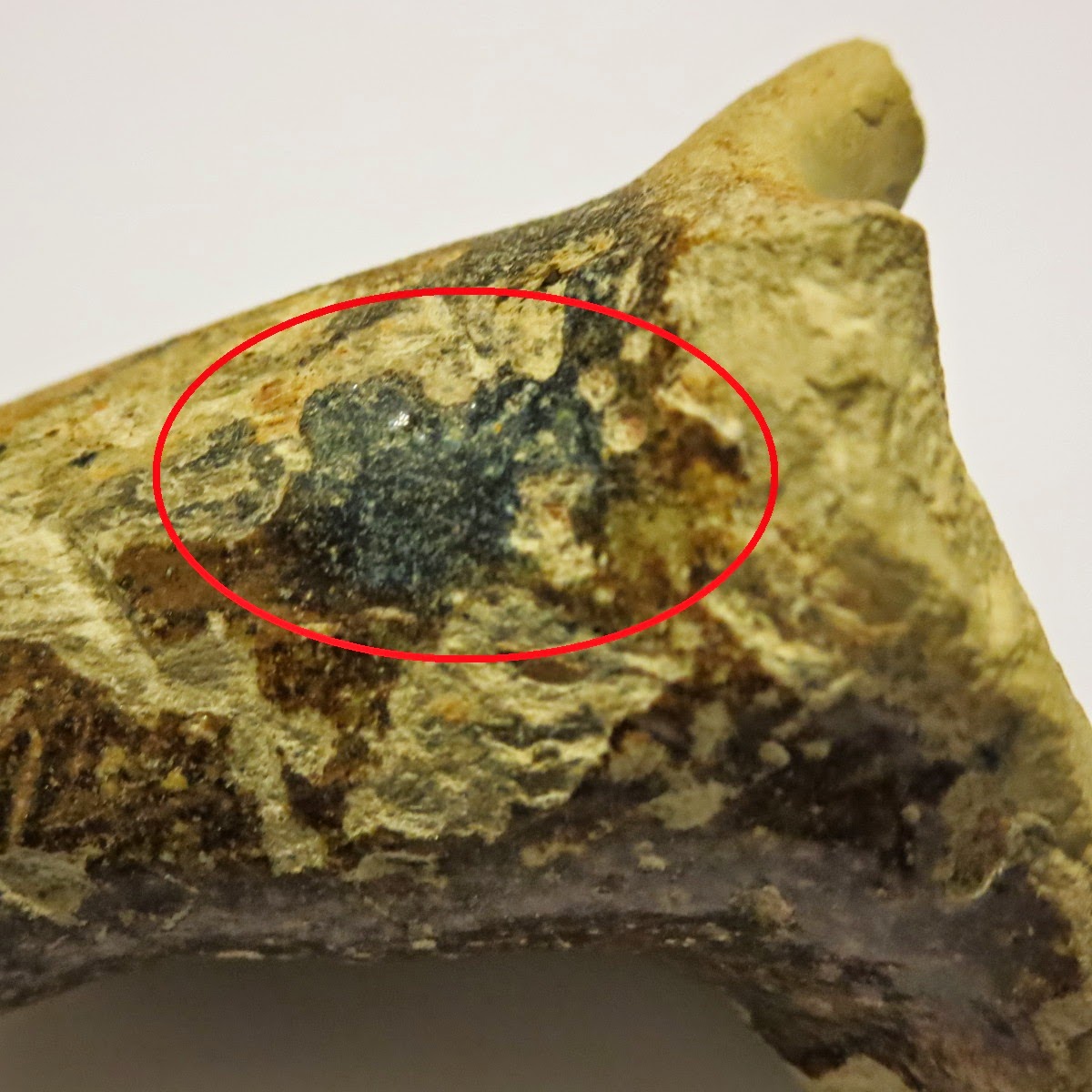What could be more exciting than receiving a text from the farmer telling me that he found the neck and handle section of a jug while planting sweet potatoes?! Above is the marred remains of said jug section, but boy, was I excited! Do you see what I see?
 |
| Unglazed interior of the jug |
First, we'll get out of the way that it is stoneware. It is also salt-glazed. The interior is not glazed which generally tells me that it pre-dates 1850, since that is when it starts to become more common to see pots glazed on the interior.
 |
| Marbling in the broken section showing the possibility of rolled clay |
The handle is particularly awesome for many reasons. One, is that the end of the handle where it broke has this beautiful marbled texture that almost looks like the wedge of clay was rolled before being attached to the bottle and pulled for a handle. Does that make sense? The potter took a hunk of clay, rolled it into a fat snake-shape, then attached it to the neck of the jug, and pulled the shape of the handle. I don't know that this is for sure how it happened, but it makes sense to me and visually seems to match my theory.
The handle is also quite thick, roughly 1 1/4- 1 1/2 inches across at the top, which makes me wonder how large the jug was that needed such a thick handle!
 |
| Can you spot the cobalt blob at the upper part of the handle? |
 |
| Cobalt blob circled |
Another reason is that it has a blob of cobalt on the upper part of the handle where it joins the vessel. This tells me that it is probably not English, as I don't know that I have seen an English jug with a blob of cobalt at the handle juncture.
And then we come to perhaps the most tantalizing part of this piece- the evidence of kiln furniture! Can you make out the subtle chance in surface color and texture to the right of the handle remain in the photo above?
That subtle change in surface color and texture tells me that it is a touch mark, most likely where a piece of kiln furniture touched the top of the handle. Not just any piece of kiln furniture, mind you, but a bar!
Combined with the very dry surface of the rim, the touch mark and dry rim tell me that a bar was used to stack this jug in the kiln when it was fired. Check out a
blog post I did a few years ago on this topic to get an idea of what the kiln furniture looked like. I'm not coming to the conclusion that this piece was made in Fayetteville (per the linked blog post), but I don't recall seeing stacked jugs like this much in Virginia (off the top of my head, maybe in Alexandria), and am not sure about Tennessee. The neck doesn't match the pieces from Fayetteville, either, so we'll toss that thought until we (hopefully) find more pieces!
We had a great turn out for the
Carolina Farm Stewardship Association's Triad Farm Tour last Saturday and Sunday. This
coming Sunday is our own farm open house and pottery sale. Lots of new pots, seconds, and older pieces at deep discounts!



















